Interesting breast milk facts: Breast milk and breastfeeding are amazing.
We know it can be hard, exhausting and a downright struggle at times to continue to breastfeed your little one. But besides the sacrifices we know you know about, do you have any idea how cool your breast milk really is?
Click Here for a great paper by Monica Hogan RN RM IBCLC, Louise Duursma RN IBCLC ABA Counsellor andDale Hansson RN IBCLC ABA Counsellor on the risks of formula feeding and vast benefits of breast milk.
Table Of Contents
15 Breast Milk Facts
- Breast milk helps your baby fight infections, viruses and heal quicker. Really!?
- Not only that, but your milk is customized to help your baby fight an infection or virus.
Katie Hinde (a PhD and biology professor at Arizona State University – and the author of the cool Mammals Suck… Milk blog 1) explains how the immunological composition of mother’s milk changes according to the specific needs of the baby. When momma’s body determines baby is sick (fighting infection or virus) she produces customized antibodies to fight the infection.
Basically, a vacuum is created during nursing, in which microscopic elements of saliva from the baby can enter your nipple. Mammary receptors analyze the saliva, and if a baby is sick, momma’s body responds with specific antibodies to fight that specific infection or virus!
Wow, so your boobs are like a mini-doctor, antibiotic and antiviral all in one! Who knew?
Be good to your breasts – you always wanted a doctor in the family. 😉
- Breastmilk is an awesome fat burner.
It takes about 1,000 calories a day to produce breastmilk. That’s the equivalent of running for 90 minutes (at 6 mph) or an hour of the stair climber.
When breastfeeding you’re supposed to consume an extra 500 calories a day.
That means you’re is burning an extra 3,500 calories a week – just by breastfeeding. Since it takes the average person 3,500 calories to lose one pound, you could lose a pound a week just by breastfeeding.
What do you think – does pumping and breastfeeding burn the same amount of calories? CLICK HERE to find out!
Bye-bye pregnancy weight!
- Oh, did I mention you can breastfeed while sitting or laying down?
You know, just in case 90 minutes of power-running or an hour of stair climbing, isn’t on your to-do list today. 😉
- YES. Breast milk does treat baby acne.
My baby had got the acne within the first month. I doused her face, neck and little on her chest/back in breast milk ALL day whenever I would nurse her. Then at the end of the day, I would wipe it off with warm water and reapply for sleep.
It did go away within the week instead of weeks.
Here are the last 10 other amazing Facts About Breast Milk:
- Breastfeeding reduces mom’s risk of ovarian and breast cancer, with the longer you breastfeed bringing increased protection.
- It also reduces your daughter’s risk of ovarian and breast cancer by 25%!
- Nutritionally breast milk is complete. Babies require nothing else (not even water) when exclusively breastfed (assuming mom is eating a healthy and varied diet of course).
- Breastmilk costs more per ounce than oil! Yes, breastmilk is bought and sold online all the time – at an average cost of almost $4 an ounce.
- Breastfeeding triggers oxytocin to release, which relaxes both you and your baby.
- Human breastmilk boosts your baby’s immune system. This is a big help when fighting viral, bacterial or parasitic infections.
- Breast milk boosts your baby’s intestinal flora by providing food (milk glycans) for the microbes in their digestive system.
- Breastmilk can unclog a clogged tear duct.
- Breastfeeding can save the average family over $1,000 a year over formula.
- Breastfeeding is difficult, but worth it. There are so many advantages in breastmilk for ou little ones that we have to try to take advantage of each one. Good luck to you mommas.
Also, if this happens to you where your milk supply is not as much…
How To Produce More Breast Milk:
Below I will lay out some simple things to do to increase your boob juice supply. These come from the many moms out there on the net and condensed here for you to try out.
- Drink a ton of water. They say to drink half your body weight in ounces. So if you weigh 150 pounds, then you should be drinking 75+ oz of water a day.
- RELAX.
- Oatmeal is something you could try eating. It is a natural milk producing agent.
- Always PUMP for at least 15 minutes after you nurse your baby love so your body thinks the he/she wants more. (the most milk production is between the hours of 3am – 7am – I know, you WILL be TIRED.)
- You can take the herb Fenugreek. (Always consult your OB or doctor before trying anything!)
- Blessed Milk Thistle
- Mothers Milk Tea
- Fennel Seed Tea
- More Milk Plus
- Red Raspberry Tea or Red Raspberry Capsules
- Secrets of Tea Healthy Nursing
- Drink Jungle Juice: 1 liter of boiled water, 1 liter of apple or any other juice but not acidic juice, 1 sachet Blackcurrent rehydrate, 60 mls schlehen berry elixier, 8/10 drops of rescue remedy, You will need a 2 litre container.. This amount should be used in 24 hours. KEEP IN THE FRIDGE.
3 Types Of Breast Milk
The 3 types are:
- colostrum
- foremilk
- hindmilk.
I never knew of the last 2. For me personally, I had an overproduction of foremilk.
How did I know this?
By the third week or so I noticed my baby girls poop was turning green and frothy. Not only that but she was having painful gas and explosive poops. She would struggle to burp, go poo and just cry.
It was so sad to watch her go through this.
I didn’t know what was wrong, so I consulted good ole Dr. Google because my pediatrician was no help. Thats when I learned about the last two types of breast milk.
That being said, I learned that the foremilk is what will quench the thirst of the baby and the hindmilk will give her the fatty love that helps them grow. (granted all breastmilk is always good for the baby) But for my situation, I was only giving her a large amount of foremilk only and a small, if any, amount of the hindmilk.
The result: This type of milk will go right through the baby. Giving her gas, green/frothy poop and explosive diarrhea.
So for me, I had to supplement with formula because she was losing weight. I did NOT want to give her formula but I had to. Within 2 weeks she gained a good 12 ounces. Slowly but surely…
What’s So Good About Breast Milk?
Discover how your milk changes to best suit your baby during feedings!
Welcome your baby to the world with the best start possible by feeding him the nutritious milk right from your own breasts!
It’s amazing what our bodies can do, isn’t it?
You might already be aware that breast milk is the best thing to give your baby, but you might not know exactly how fascinating this stuff truly is.
In The Beginning… Colostrum
While your baby is still busy kicking you in the ribs from the inside, your body is hard at work creating the first milk your baby will ingest. This first milk is called colostrum.
Some women will experience some leakage of it during pregnancy, but many women will not see colostrum appear until immediately after they give birth and begin nursing their babies.
It’s thick and yellowish in color, and is rich in protein, antibodies, vitamins and minerals.
The antibodies found in colostrum help you to pass along immunity to your fragile newborn and protect him from infections and illnesses.
Babies have such tiny tummies when they are born that you only need to make sure he suckles for a few minutes on each breast to get enough colostrum.
This stage of milk is often referred to as “liquid gold” thanks to its distinct color and power-pack of nutrients.
While your breasts will not feel full the day that you give birth, you already have enough colostrum to nourish your baby. Your body will produce colostrum for several days after delivery until your milk increases in amount and becomes more creamy or white in color—a time that mothers frequently refer to as the milk “coming in.”
You’ll likely notice this quite well as suddenly, your breasts will be roughly twice the size they were just days before. For me, my breast become engorged. This did pass after a few days but those were 3 very uncomfortable days.
Making The Transition
After about a week, your breast milk will change again to suit your baby’s needs.
Transitional milk is the milk that is produced by your body after the colostrum but before production of mature milk. This happens when lactation is established and production of milk begins in the breast tissue.
Transitional milk is produced approximately from day 8 to day 20.
Entering Maturity
Mature milk is produced from 20 days after birth and beyond, until the day you stop breastfeeding your child.
It continues to provide immune factors and other important components, giving your baby everything he needs for proper growth and development.
So what, specifically, is this breast milk made of?
Lots of wonderful things!
Water makes up the majority of the composition, which is why you never need to give your baby water until after 6 months when he starts eating solids. Breast milk is your baby’s food and beverage solution for these first months of his life.
Proteins, essential fatty acids, long-chain polyunsaturated fatty acids, vitamins, minerals, and carbohydrates, particularly lactose, are also key ingredients in your breast milk.
Magical Milk – Foremilk and Hindmilk
What’s most amazing about breast milk is that it changes even as your baby is eating it!
At the beginning of a feeding, the milk is referred to as foremilk.
At the end of the feeding, the milk is called hindmilk because of the fat content increases.
The consumption of hindmilk is essential to ensure that your baby is getting adequate nutrition, which is why mothers are urged to feed one breast at a time before offering the other breast to their babies.
How does this happen?
Because of the mechanics of milk release, the amount of fat in the milk available to your baby gradually changes as a feed progresses.
As milk is produced in the breast, the fat globules in the milk bond together.
Between feedings, milk collects in the breasts and gradually moves out toward the nipple, leaving more and more of the fat back in the milk ducts.
The more time between milk removal by either feeding or expression, the lower the fat content of the milk that’s available to your baby at the beginning of the feeding.
The end result is that the milk gradually increases in fat as the feeding progresses.
Saving It For Later – Storing Your Breast Milk
Whether you’re a mom that works outside the home, or you want to leave some breast milk available for your husband (or another relative) to feed your baby with, you can easily store your breast milk for later use and it will still have the wonderful benefits it did while it was inside your breasts.
The best way to do this is to use sterile containers with airtight seals, or look for plastic bags designed especially for the purpose of storing breast milk. I used the Lansinoh milk storage bags. The 100 count because they get used FAST.
Just like regular plastic storage bags you’d use for your meats and produce, there are different kinds for breast milk storage.
Some are only designed for short storage periods of less than 72 hours and others can be used up to 12 months if frozen.
Leaving Breast Milk Out
It’s not recommended to leave breast milk out at room temperature for longer than 8 hours.
If you choose to keep it in the refrigerator, it’s best to use it within 5 days.
Storing it in the proper receptacle and placing it in the freezer can keep your breast milk fresh between 6 and 12 months.
To use frozen breast milk, simply thaw it in the refrigerator overnight.
You can also hold the bottle under warm running water to quickly thaw, or place the sealed container in a bowl of warm water for 20 minutes to bring it to body temperature.
Thawed milk is safe in the refrigerator for 24 hours.
Resist the urge to microwave it as that will change the composition of your beautiful breast milk.
Do not refreeze thawed breast milk, for the very same reason.
Regardless of being home or out, remember that breastfeeding is the best way to nourish your baby. However, if you must use formula to supplement, mix it with water and not breast milk, as you can’t save used formula for later.
Something to think about when you’re baby is enjoying the benefits of your breast, from foremilk to hindmilk.
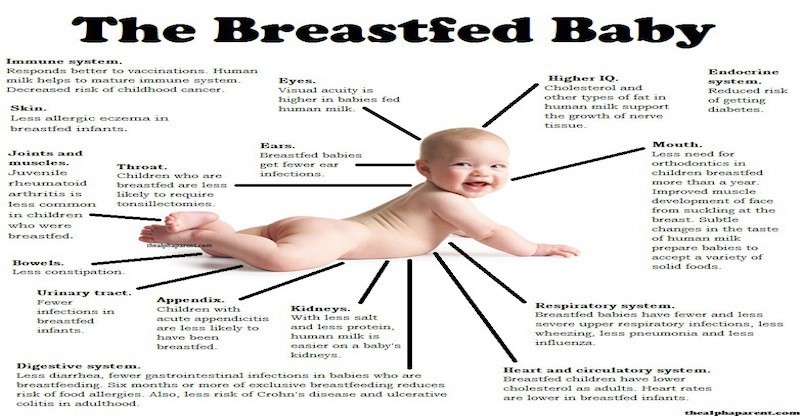
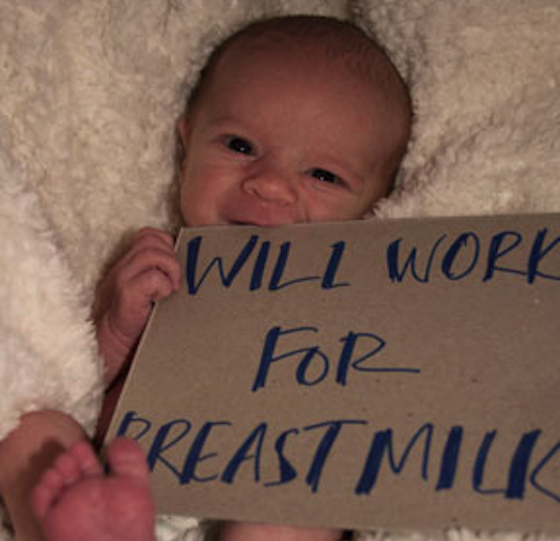
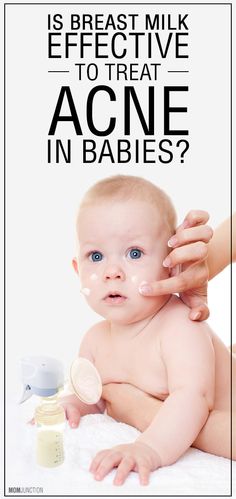
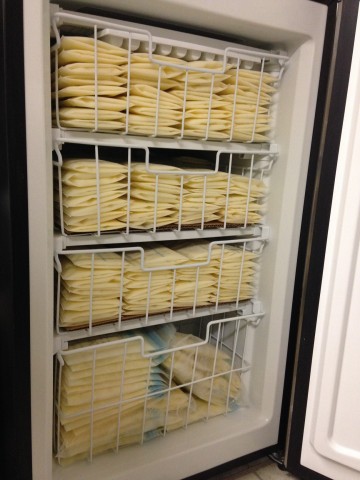
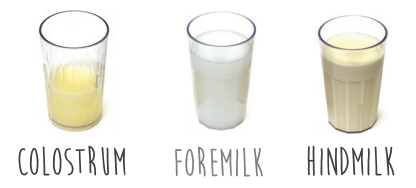
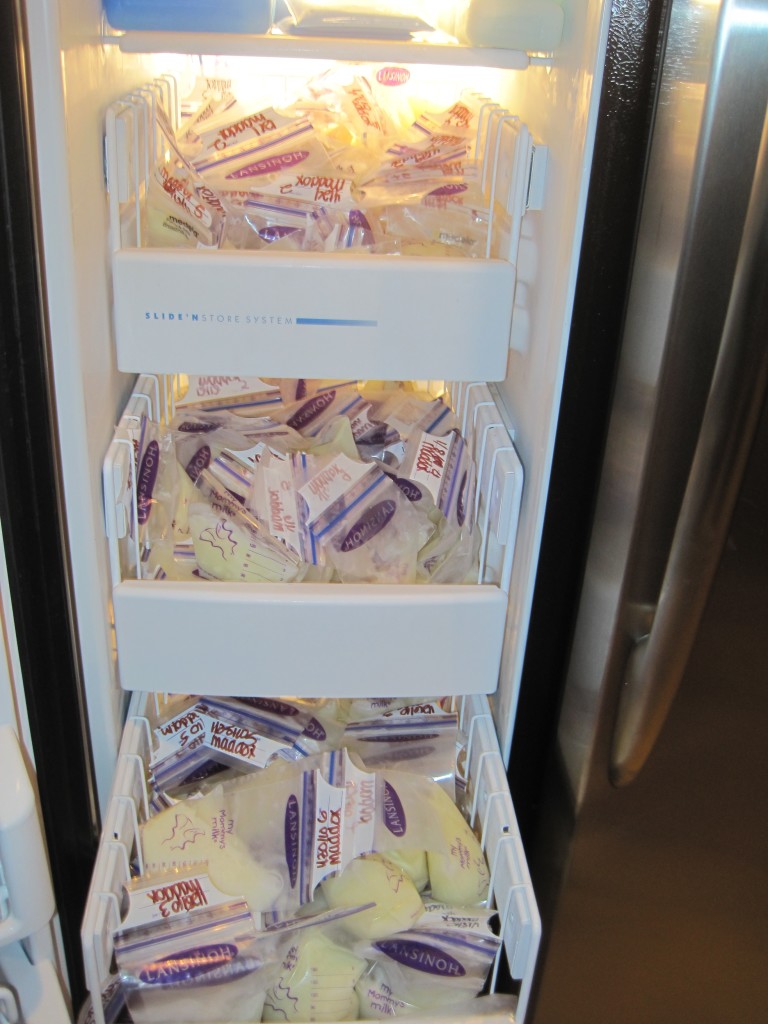
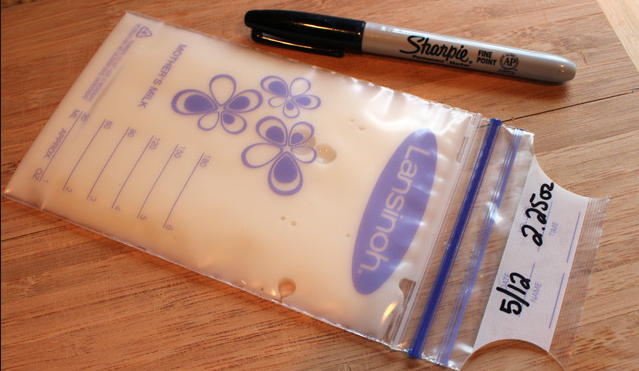

[…] aren’t sure why, but studies prove that breastfeeding your baby can lower the risk of SIDS by as much as 50%. They think it may protect babies from infections that […]